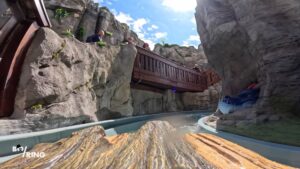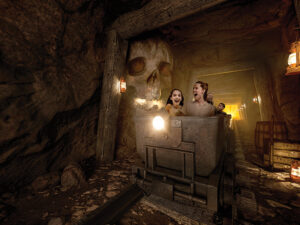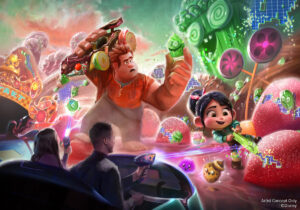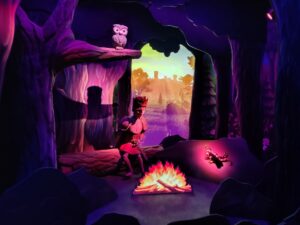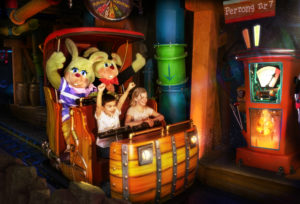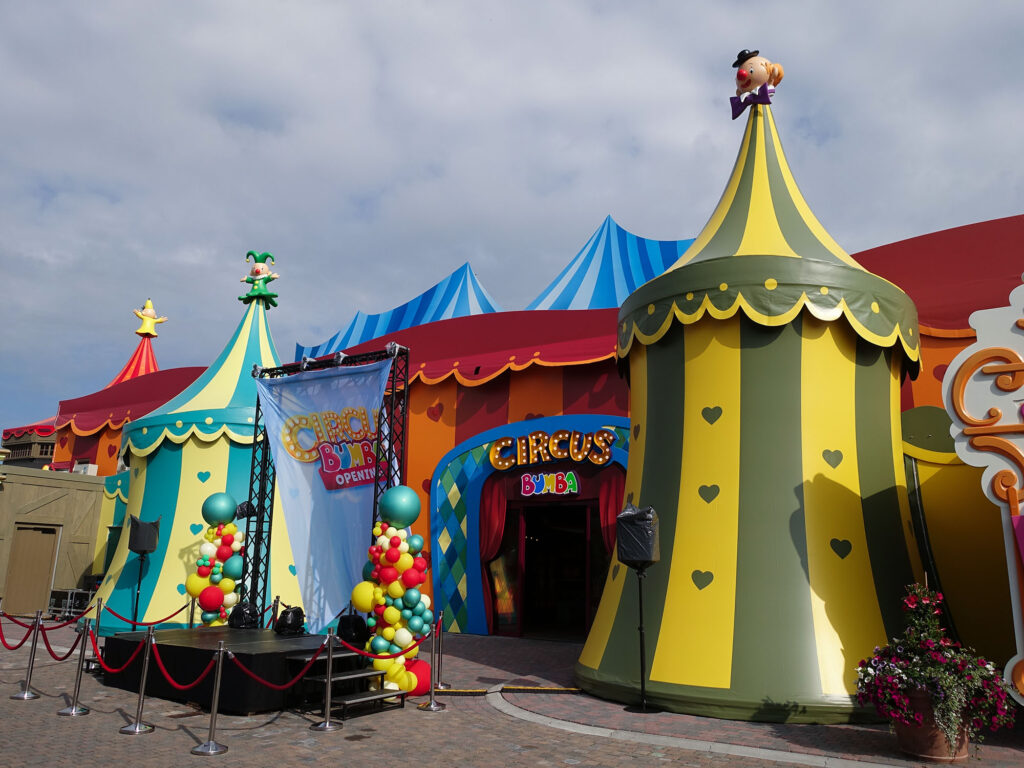
Last week, Belgian theme park Plopsaland de Panne celebrated the grand opening of their new indoor area, including a brand new dark ride. The new zone is called ‘Circus Bumba’ and is themed after the TV show by the same name, starring a friendly clown named Bumba. The zone comprises five attractions aimed specifically at young children, the same target audience as the Bumba TV series. One of these attractions is the dark ride ‘Op Reis met Bumba’ (‘Travelling with Bumba’), taking riders on a trip around the world and even into space.
Construction on Circus Bumba started in January 2022 after years of anticipation, as the zone was initially scheduled for 2020. In the announcements of the new area, much attention was given to the major ride planned in the area: the dark ride Op Reis met Bumba. Apart from the dark ride, the zone contains two flat rides: a balloon ride and a flying bus. Furthermore, the zone consists of two play areas, a new theater for the Bumba shows, a new restaurant and a gift shop. The entire area measures 3000 m2 and marks an investment of €12,5 million.
On Friday 21 July, Plopsaland celebrated the grand opening of the new area. Press and 1000 guests were invited to explore the zone for the first time, before regular guests were allowed to enter the hall on the next day. The guests for this event all bought special tickets, allowing them to participate in the Bumba Kids Parade, marching from the park entrance to Circus Bumba together with Bumba and a fanfare band. Team DRdb joined the ceremony and the parade, and obviously tested the new dark ride. Before describing more of the ride and ceremony however, let us first explain a bit more about the history of Bumba.
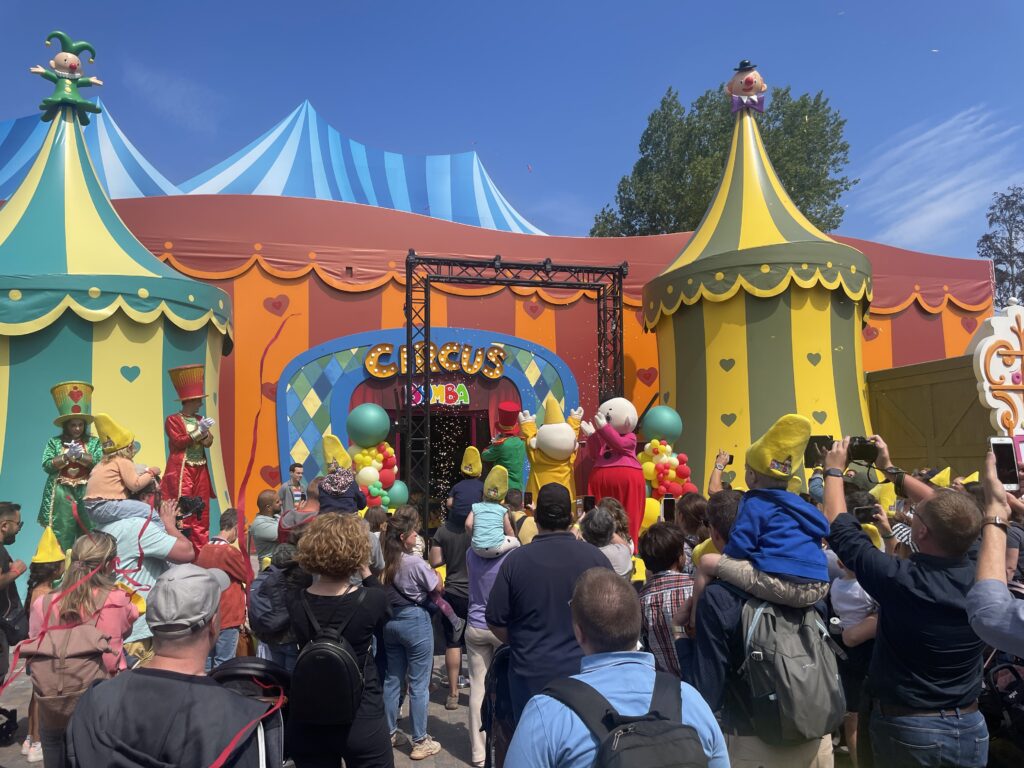
The history of Studio 100
The story of Bumba cannot be told without diving deep into the history of Studio 100, the Belgian media company who produces the TV show. Moreover, the company is the owner of the Plopsa Group, operating 9 theme parks throughout Europe, among them obviously their ‘flagship park’ Plopsaland de Panne.
The story of Studio 100 starts with a dog and his owner, Gert Verhulst. Gert was only 18 years old when he debuted as a TV host in 1987, and in 1989 he started announcing children’s shows on Belgian television. To enlighten the announcements, he figured he needed a companion, which was found in the form of Samson, a talking dog puppet, voiced by Danny Verbiest. The duo became so popular that they soon took off from their roots as programme announcers, and got their own TV show called Samson & Gert. The original Samson & Gert TV series ran for 16 years (1990-2006), spanning over more than 700 episodes.

The success of the series in both Belgium and The Netherlands gave Verhulst and his associates Verbiest and Hans Bourlon the opportunity to start their own production company in 1996, called Studio 100. Besides new episodes of Samson & Gert, the company started producing a new show, Kabouter Plop (Leprechaun Plop) (1999-present). Kabouter Plop was another huge success in both countries, paving the way for many shows to come. In a later stage, Studio 100 strived to reach more international audiences; they managed to buy E.M. Entertainment, owner of IPs like Vic the Viking and Maya the Bee. By reviving these characters with new TV series, Studio 100 got a strong foothold in the European market for children’s television.
Apart from the production of TV shows for children, Studio 100 rapidly expanded their business with a children’s music group (K3), musical productions and film productions. In 1999, they bought the struggling Meli-park, a bee-themed theme park in the Belgian town De Panne, and rebranded it as a Studio 100-theme park. The park was named Plopsaland (the name of Leprechaun Plop and the first two letters of Samson), and the Plopsa sister company was founded by Studio 100 to run the theme park business. A little over two decades after the launch of Plopsaland, the Plopsa Group owns nine theme parks in five countries, all containing attractions themed to the IP of Studio 100.
The introduction of Bumba
Despite the other businesses such as the theme park branch, television productions have always been the core business of Studio 100. The company went on producing successful shows like Piet Piraat, Wizzy & Woppy and Het Huis Anubis. Some of these would eventually make it to the international market, along with series like Maya and Vic the Viking. One of the series originally meant for the Dutch market was Bumba, starring a friendly clown by the same name created by Jan Maillard. The original series ran from 2004 to 2006, but was revived in 2010 and has been in constant production ever since. Though originally aimed at the Dutch market, Bumba is also broadcast in Canada, Germany and Spain.
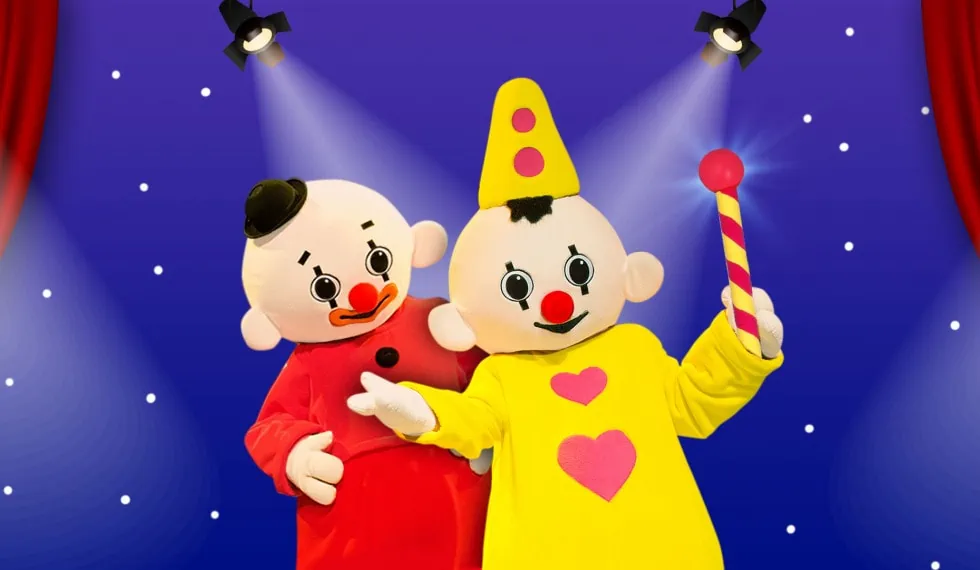
The Bumba TV series aims specifically at young children, aged between 1 and 4 years old. Around 300 episodes exist up to now, each lasting only about 4 minutes. The series originally takes place in a circus, where Bumba pulls off jokes together with his friends. Bumba’s biggest friend is Bumbalu, another clown and Bumba’s brother. Where Bumba is recognised by yellow clothes, Bumbalu is typically dressed in red. Moreover, Bumbalu is significantly taller than Bumba. The series also features a girl figure called Bumbina. Apart from those three human figures, most characters of the series are circus animals, such as the bird Kiwi or the elephant Tumbi.
When the series was revived in 2010, new episodes were produced as thematic series of 10-20 episodes. Instead of all episodes taking place in Bumba’s circus, the clown was now taken to places like Africa, Asia or even to space. During these adventures abroad, Bumba meets many more characters, most of which are again animals. When Bumba comes back to the circus in later episodes, the international friends sometimes join him back home.



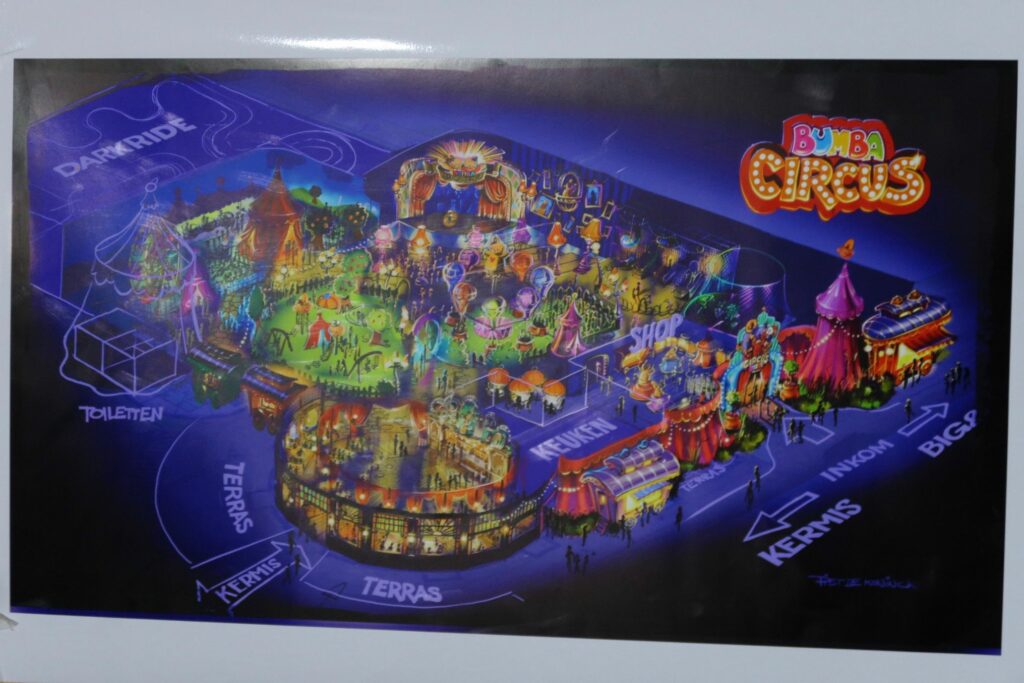
Joining the circus: creation and opening of Circus Bumba
With more than 300 episodes of Bumba existing, and new episodes still in the making, it was only a matter of time before the clown would receive his own zone in Plopsaland de Panne. The park already included the Bumba Theatre, but until this year, no actual rides were themed after the successful series.
Plans for the creation of an indoor Bumba zone, replacing the current Bumba Theatre, were already announced by 2019 with an opening scheduled for 2020, but the plans were put on hold. It was not until 2022 that construction on the zone started. By then, the parks had announced that Circus Bumba would include multiple rides focusing on young children, just like the TV series, and that it would include the new dark ride, Op Reis met Bumba.
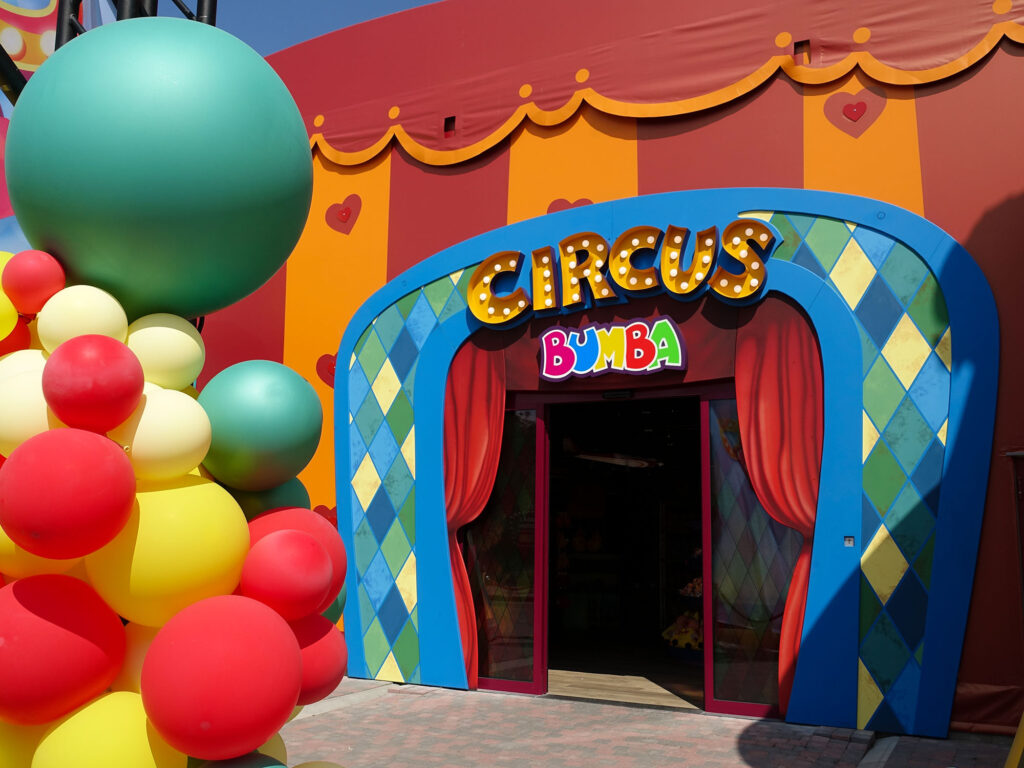
After years of anticipation, the world of Bumba was eventually opened for guests to step into on 21 July, 2023. For the opening day celebration, children were given the opportunity to join Bumba in a true circus parade, marching from the park entrance to the Circus Bumba zone. Marching behind a fanfare band, Bumba and his friend Bumbalu, the children were led to the official opening ceremony of Circus Bumba, taking place right in front of the new indoor area. After Bumba and Bumbalu pushed the big button, a shot of confetti and fireworks marked the official opening. Further details can be seen in our video below.
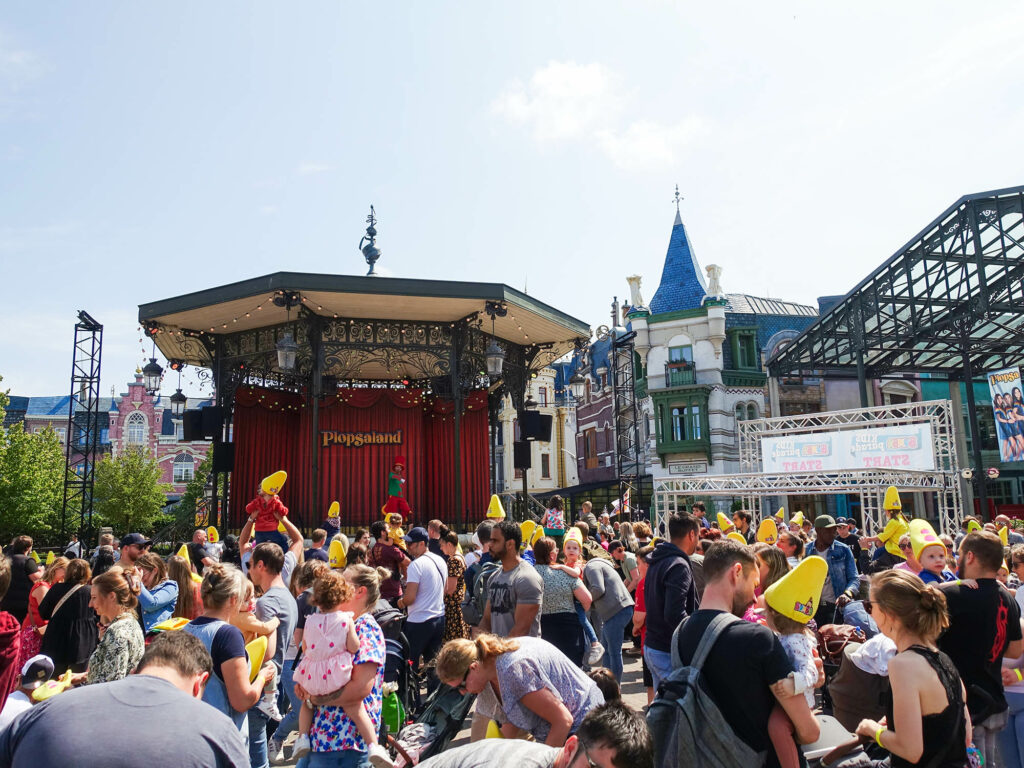
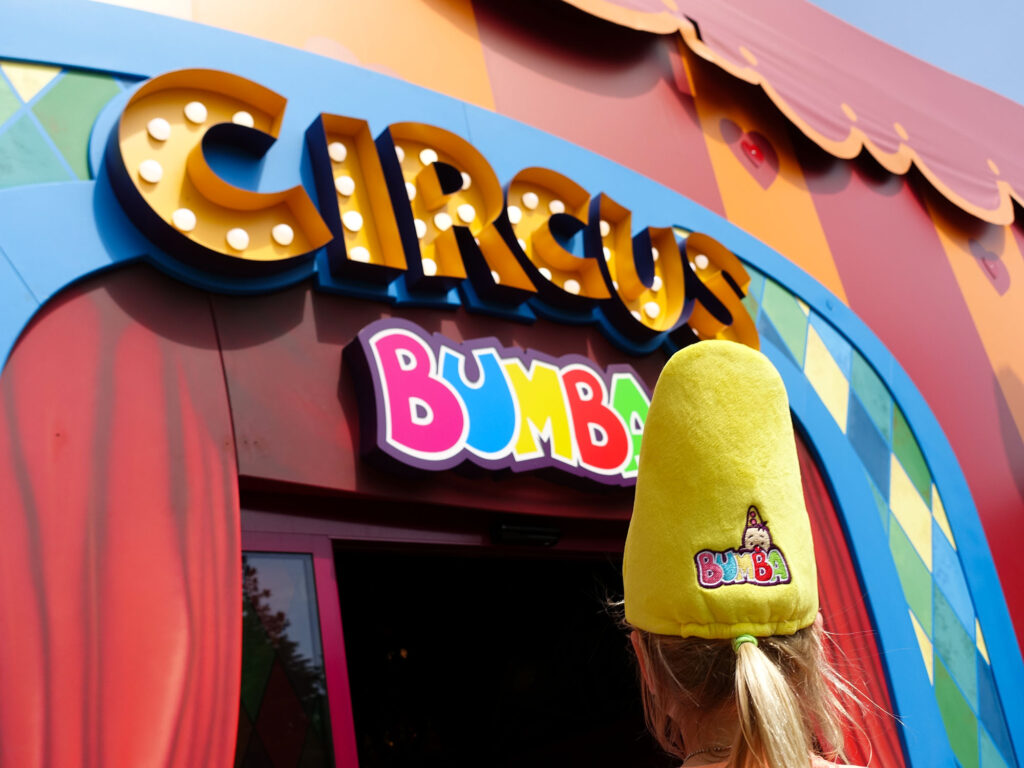
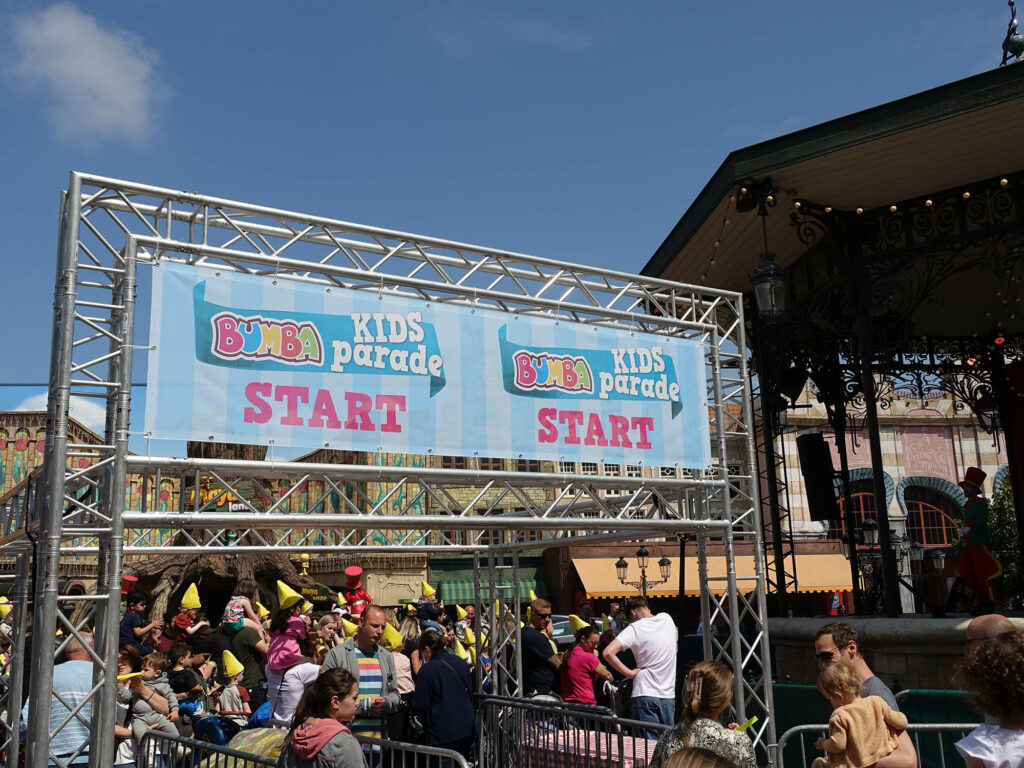
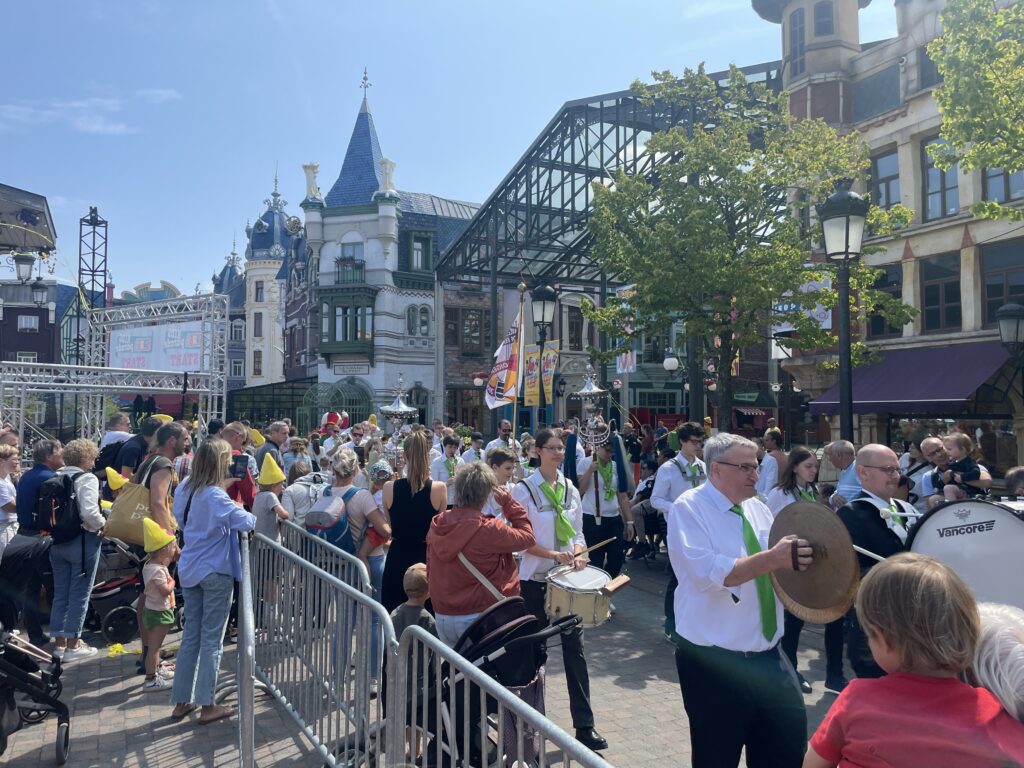
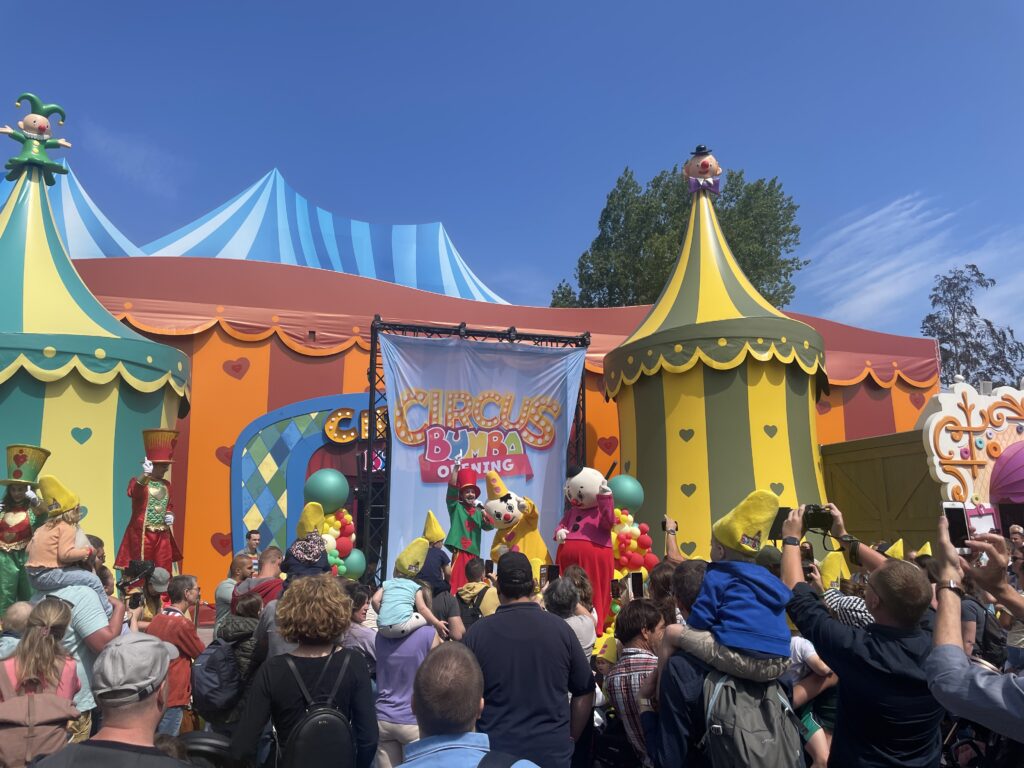
Ready to travel: Op reis met Bumba
With Circus Bumba officially opened to press and special guests, it was time to take a look inside and check out the indoor zone for ourselves. Circus Bumba is entered (and of course exited) through the Bumba gift shop, after which guests find themselves in a large hall featuring the two rides and playgrounds in the front, and the dark ride in the back. Red and yellow cloth is hanging from the ceiling, to give the area the feeling of a circus. Most of the theming in the indoor area consists of 2D-images of either Bumba and his friends or circus patterns.
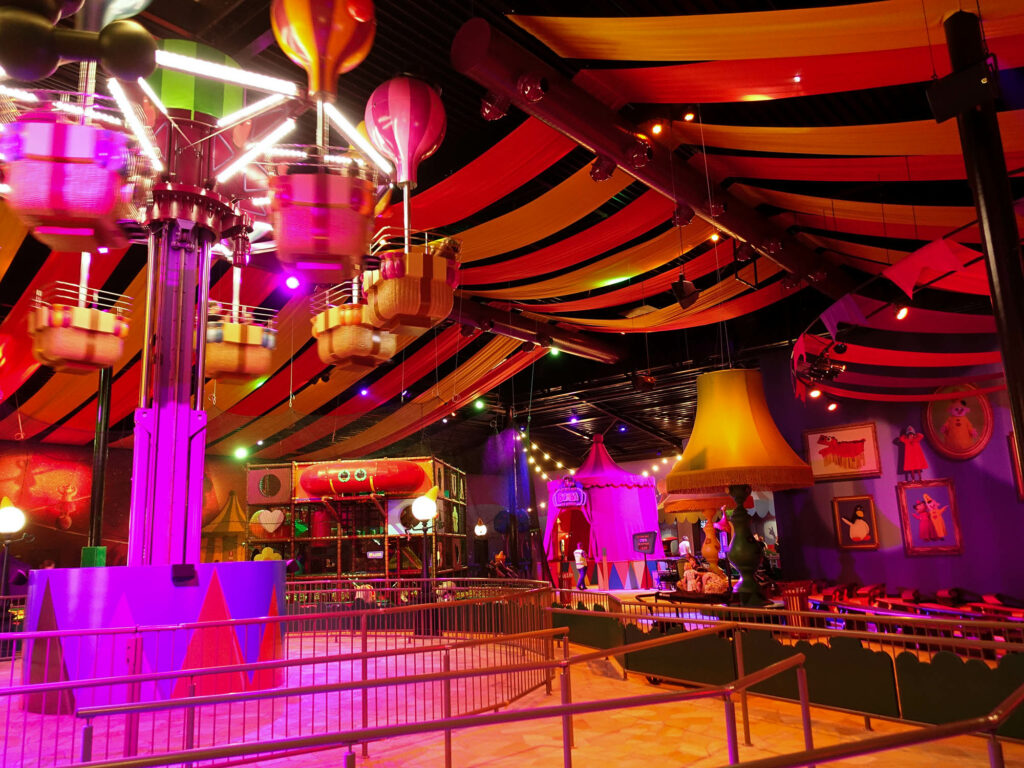
Halfway through the hall, a small circus tent with the name sign ‘Op Reis met Bumba’ marks the entrance of the queue line for the dark ride. The main queue is located within the big hall, and consists of zigzags lightly themed with 2D images of a forest. An extended queue off to the side of the main queue is separate from the main hall, and themed as a bedroom, with windows doubling as multimedia screens. During the opening day only a small part of the main queue was used, with no need to use the extended queue. Nonetheless, considering the ride’s average capacity, this extended queue is probably built for good reason.


The station to Op reis met Bumba is themed as a small gathering of tents, with red cars departing about every minute, carrying up to two adults and two children. Children are always seated in the front seat of the ride, while adults have to sit in the back. The vehicles are delivered by German manufacturer Metallbau Emmeln, and are equipped with a voice-over: after boarding, riders can choose to hear the voice in French or Dutch. While Metallbau Emmeln worked on the ride system, the theming of the ride was created by Fisheye, after design of Plopsa’s home designer Piet de Koninck.
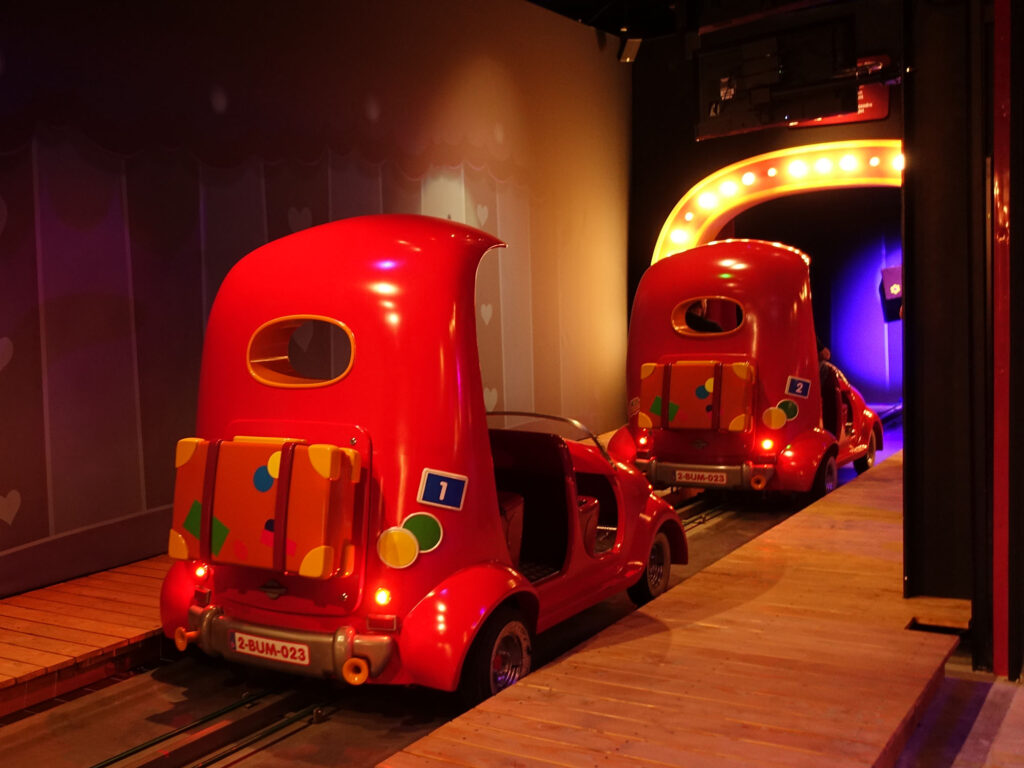
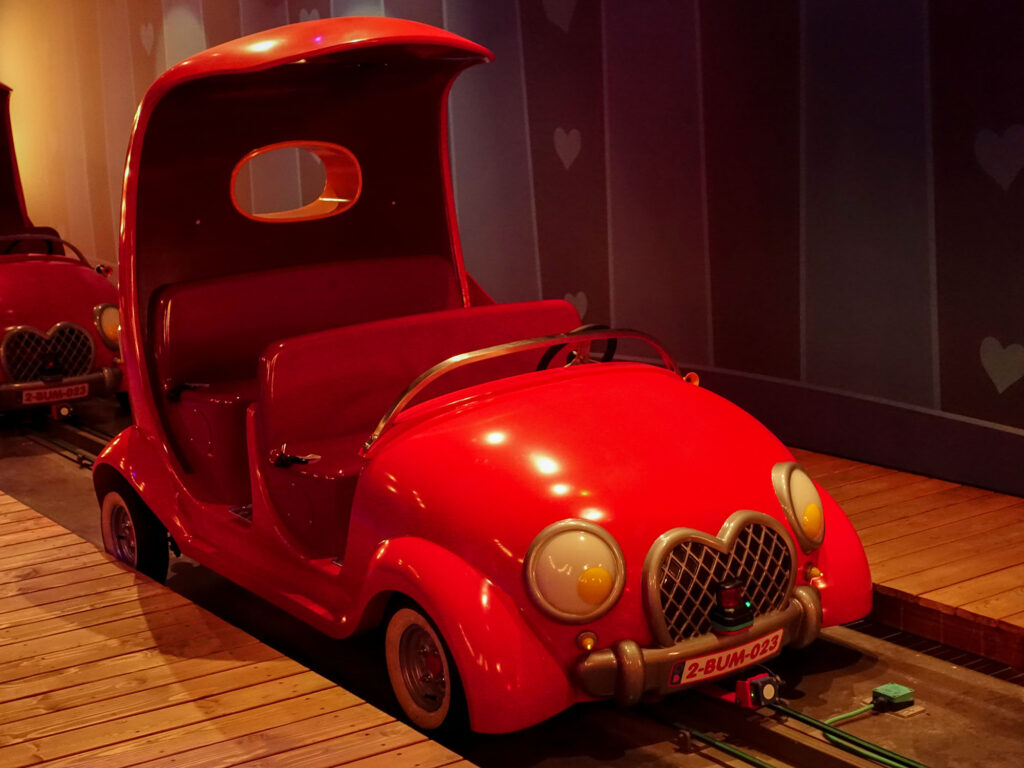

Upon the dispatch from the station, riders enter a series of rooms depicting different places where Bumba and his friends can be found, which is a conscious choice made by the Plopsa designers to depict Bumba outside the known circus environment. The ride starts out in a rather general forest area, which has about the same vibe as the queue area of the ride. From there on out Bumba takes riders on a journey through Asia, a snow themed area, space, a rainforest, the underwater world and then back to a larger circus area.


Influences for Bumba
Op reis met Bumba uses several techniques to accommodate the transitions between scenes. These range from themed doors, to doors with a projection of Bumba throwing a snowball towards the riders, fade outs and video mapping. The video mapping, which takes place between the jungle and underwater world is reminiscent of the change between the rainforest scene and underwater scene of Mickey and Minnie’s Runaway Railway, showing that the amazing technique used in the large Disney dark ride can quite easily be achieved in a smaller ride such as Bumba.
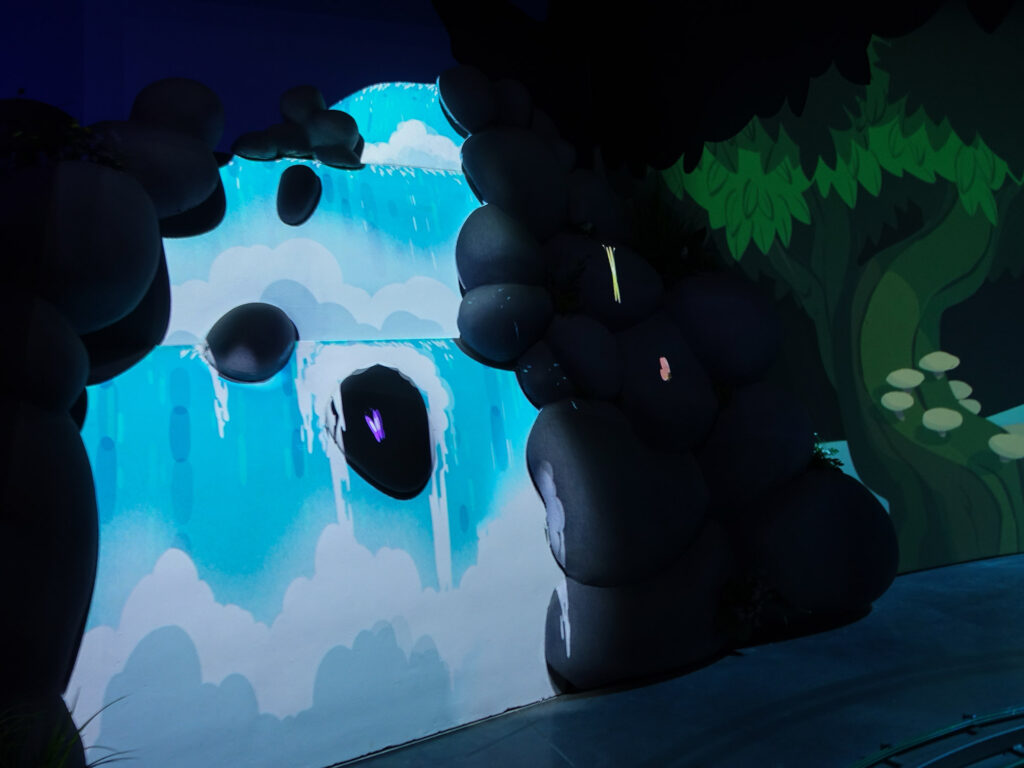
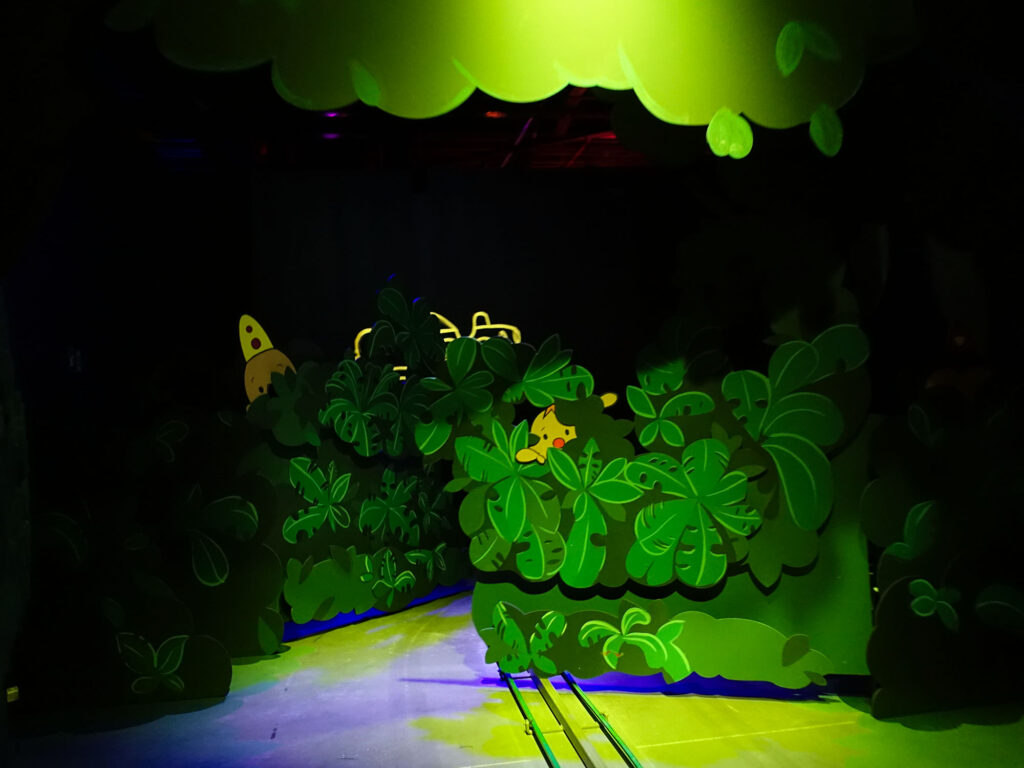
The different elements used for the transitions can be seen throughout the entire ride. The scenes are made-up of 2D and 3D decors, animatronic, and both video mapping and physical screens. The combination between these elements works very well in many of the scenes. Often 2D elements are used in fore and background while 3D objects are used for the characters and various important objects. This works especially well in areas such as the rainforest where Bumba is driving a jeep, and for the submarine and octopus in the underwater world.
The last two are also very good examples of the usage of integrated video, both using video as a medium to show a more dynamic part of a character, while 3D scenery is used around the screen to give a certain depth to the screens. This integration isn’t used for the screens depicting the smaller children which can be seen in various parts at the beginning and ending of the ride, which feel a little out of place in the way they are positioned in various scenes.
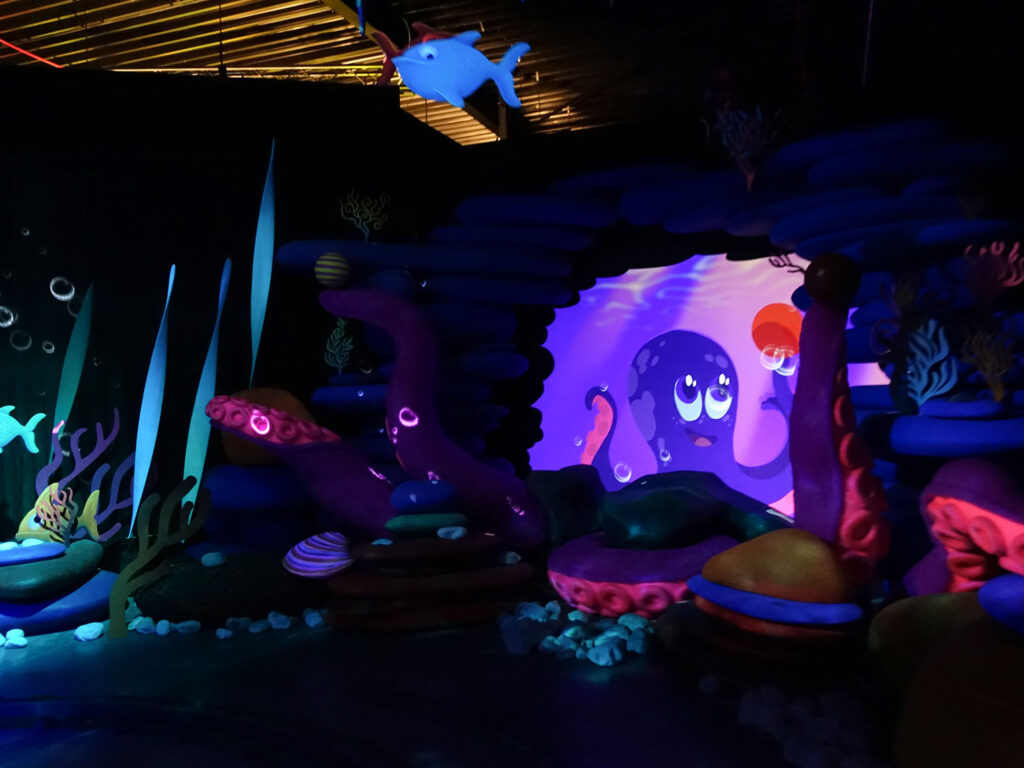
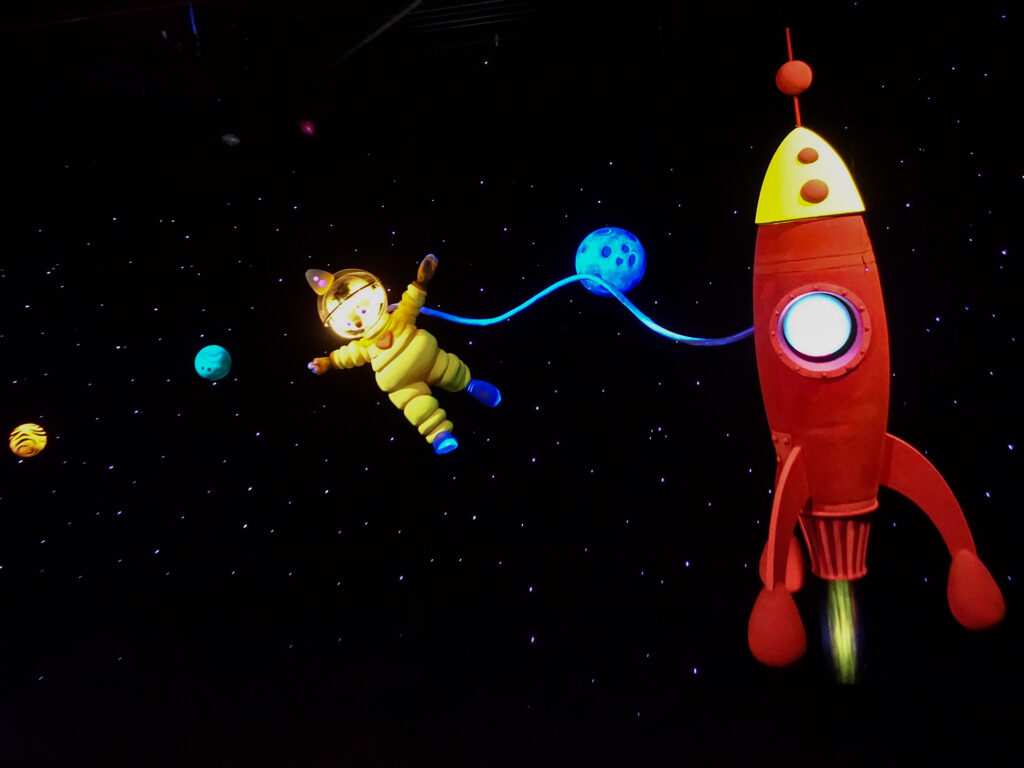
The way theming in the scenes is used varies per scene. While some scenes are very richly themed, some are more basic in their use of theming. The difference is most visible in the space and circus scenes. Both lack the feeling of depth which other scenes in the ride portray due to the varying use of 2D and 3D objects. This lack of depth continues after the last scene, where various simple objects are placed, waving goodbye to the guest.
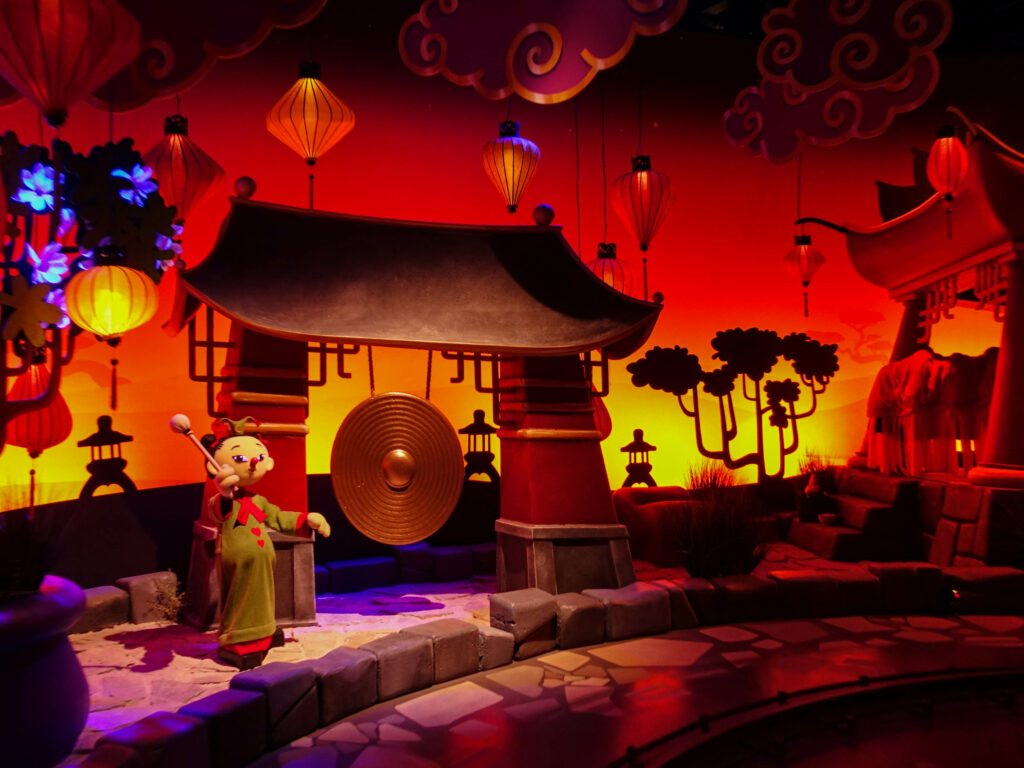
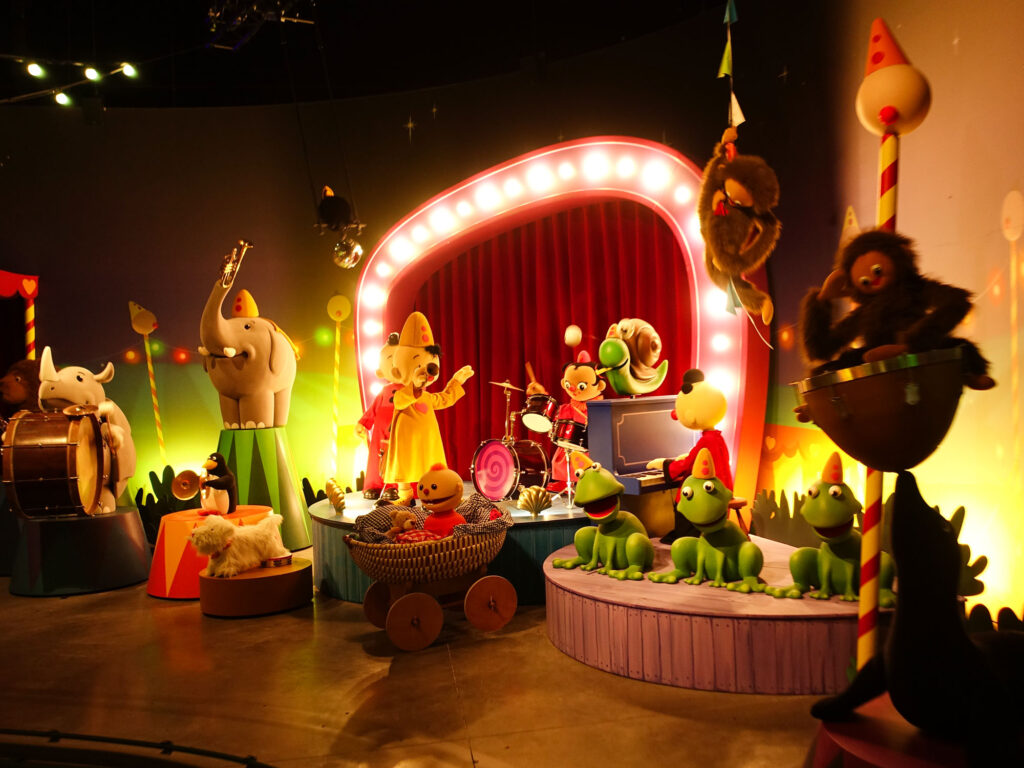
Concluding our travel with Bumba
Op Reis met Bumba was highly anticipated, as it is the very first time that Plopsa has built their own dark ride from scratch. Other rides in their parks, such as Bos van Plop, Smurfenavontuur or Burg Falkenstein, already existed in theme parks that were acquired by Plopsa. Bos van Plop did receive a retheme to a Studio 100 IP, but the others remained untouched by the group (until the closure of Burg Falkenstein last autumn). With Op Reis met Bumba, Plopsa could finally show their capabilities concerning the design of a dark ride.
Looking at the ride, it is clear that Plopsa had a very good idea about the ride’s target group and the expected look and feel. Op Reis met Bumba feels in many ways like the famous smaller dark rides in Disneyland’s Fantasyland, in terms of ride length, coziness, size of the scenes and the overall tone of the ride. The extensively themed scenes with many moving objects, combined with well-considered transitions between the spaces, create a convincing ride that suits the young audience, but can entertain adults as well.

A common trait throughout the ride is that the appearance of Bumba is notably different as an animatronic versus the appearance of the clown in the projections. Where Bumba is known from TV as a character without a neck, the animatronics in the ride do seem to have a neck, contradicting the depictions of Bumba on the projection screens. Nonetheless, it can only be appreciated that the park decided to use both animatronics and projections of Bumba, using all available techniques (including multi-language voice over) to create an immersive experience.
All in all, Op reis met Bumba is a well rounded addition to the park’s line-up and a convincing statement of the Plopsa group, confirming their ability to design an immersive ride. The use of physical sets and modern techniques such as videomapping make for an immersive experience, which has a high re-rideability factor. Op Reis met Bumba creates a new dark ride which is entirely different from its neighbor Bos van Plop, contributing to the variety in the dark ride offerings at Plopsaland de Panne. It is not sure however how long both rides will be neighbors, since rumor has it that Bos van Plop may be closed soon, leaving Op Reis met Bumba as the park’s only dark ride.
We’d like to thank Plopsaland the Panne for the great day and help getting this report finished!

© Dark Ride Database
Visit, Report and Pictures by Luc, Johan and Erik

